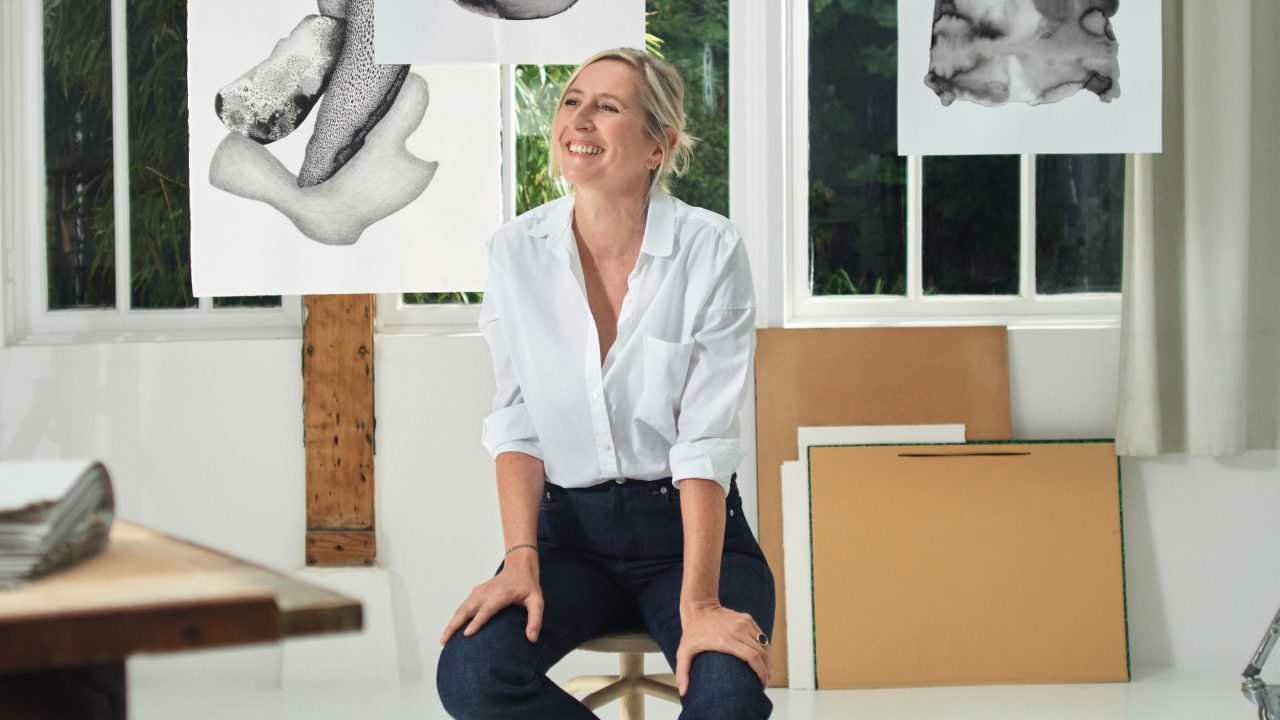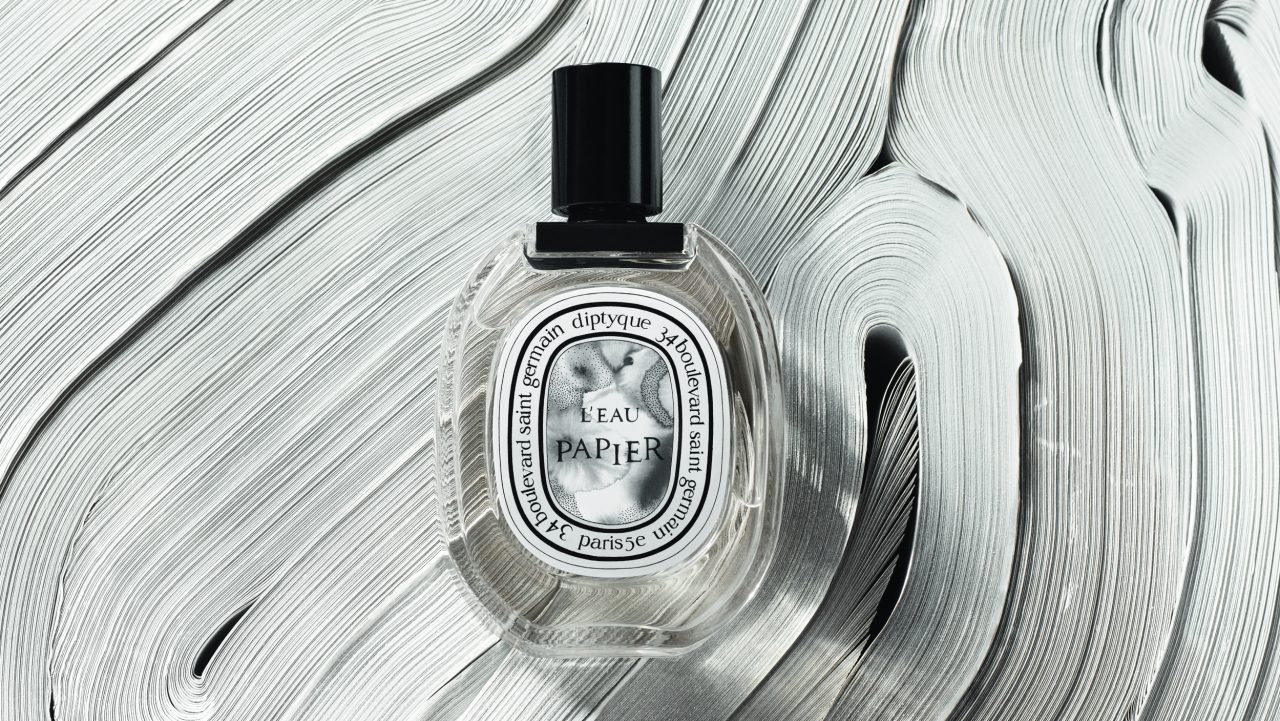
We were artists, guided not by ambition but by passion, imagination, the creative impulse and the will to realise something that was true,” Diptyque’s senior vice‐president Laurence Semichon starts off this interview by saying.
For those well versed in Diptyque lore, this will be a familiar quote, uttered by one of the French brand’s founders, Christiane Montadre‐Gautrot, to describe how the house, once labelled a “merchant of nothing” for selling everything from fabrics and fragrances sourced from various countries to second‐hand objects, has been operating as a collective since its founding in 1961 by three creatives—artist Desmond Knox‐Leet, theatre director and set designer Yves Coueslant, and interior design Montadre‐Gautrot.
The turning point, so to speak, came with the launch of Diptyque’s first candles in 1963: Aubépine (hawthorn), Cannelle (cinnamon) and Thé (tea), which delighted Parisians with their sophisticated scents and elegant hand‐calligraphed labels, setting the brand on its way to becoming what it is today: a luxury fragrance house synonymous with quality and refined, sumptuous personal and home scents.
These were followed by L’Eau, the house’s first eau de toilette, in 1968.
ALSO READ: GRAZIA’s Best Of Beauty: 10 Best New Products Of the Week

A visionary forerunner of the scents we see today, L’Eau was created without gender in mind, which “was particularly innovative at the time”, says Semichon, adding that “this is still a habit in our creations today”. Diptyque has since collaborated with some of the best noses in the business, including renowned French perfumers Olivia Giacobetti and Fabrice Pellegrin, who created Philosykos in 1996 and Do Son in 2005 respectively.
While the Diptyque universe has expanded from a small shop in the fifth arrondissement of Paris to nearly 100 stores worldwide, the innate appeal of the maison remains unchanged—each of its scents is still irresistibly relatable no matter how esoteric its name sounds.
Take, for example, 2018’s Tempo, a kicky reference to the cultural speed of the Swinging Sixties (the scent itself, created by perfumer Olivier Pescheux and which includes notes of patchouli, sage and violet, evokes those worn by the youths of the era).
Or 2022’s Opsis, composed by Pellegrin, who had in mind the scene of an evening out at a London theatre (the mix of soft musk and incense evokes the sensual glamour of a darkened theatre, while sparkling bergamot symbolises the bright stage lights).
ALSO READ: “This is Tiffany” Campaign Starts Zoë Kravitz, BTS’ Jim, Gal Gadot

How, then, did Pellegrin approach his new composition for Diptyque called L’Eau Papier? As its name suggests, the perfume seeks to translate the smell of water and paper into an olfactory symphony.
Ingeniously, he tackled this tricky brief from Semichon as if he were a novelist writing a story whose main plot involves “a white sheet and a black brush stroke, instigating a creative gesture that unites the nose and the hand”. Based on this imagery, the perfumer fleshed out a structure to Diptyque L’eau Papier, much like how novelists guide a story across its arc.
To mimic the smell of ink on paper, he extracted the sweet scent of roasted sesame seeds (according to him, ink‐drawn paper usually contains compounds that give off a similar smell when decomposing), and as for that of the paper itself, he used a rice steam accord to give the fragrance some texture.
ALSO READ: Pan Pacific Singapore’s Stunning Redesign Offers An Indulgent Escape From City Life

With the two main characters sorted for Diptyque L’eau Papier, Pellegrin next put in place supporting actors to give depth to his composition. White musks (“I’ve tried to convey the subtle, sensitive interaction when ink is applied to a sheet of paper through an overdose of musks,” he says.) and blonde wood, both classic Diptyque ingredients, as well as mimosa, were added, with the last giving the composition a pleasantly powdery note.
The interesting thing about Diptyque L’Eau Papier is that unlike its compatriots, which often smell similar from start to finish, “it produces different results from one skin to another, thanks to the way the white musks continue developing and unfolding over time”, says Pellegrin.
Indeed, one is enveloped in a soft but pronounced burst of mimosa with a background of sweet, starchy rice at first spritz, but for its dry-down, the cashmere‐like white musk takes on different shades. The general thought is that on oilier skin, Diptyque Leau Papier’s scent becomes more prominent as the hours go by, blending beautifully with the green notes of the mimosa.
On those with slightly drier skin and who don’t perspire as much, the roasted sesame and blonde wood notes become more apparent, while the white musks retain their original haziness.
ALSO READ: RIMOWA Celebrates Memory of Travel With New Campaign

Also unlike other fragrances with white floral notes, L’Eau Papier holds up beautifully in Singapore’s
hot and humid weather. Expect sillage of up to seven to 12 hours (even more, if you spray it on your
clothes), a concept of longevity Pellegrin appreciates when it comes to how natural ingredients help him continue storytelling with fragrances.
“Natural materials are timeless,” he says. “They have always existed and will always be there to bring poetry to fragrances. What makes me dream is to tell everything about a natural ingredient, like where it comes from, its terroir, its history, and to integrate all its tales in a new creation for Diptyque. In each perfume for the house, there is a dream.”
Here, Semichon and Pellegrin discuss what makes Diptyque truly special, their latest collaboration, and what comes next for the brand.
Laurence, what do you think is the most exciting thing about Diptyque to both its first-time customers and those who already love the brand?
Laurence Semichon: Our heritage, because its essence is about our view of the worlds of perfume, graphic design and objects through an artistic lens. Our [perfume bottles], which have graphic expressions on them, can be considered art pieces; our founders were artists themselves who cultivated imagination in their lives and created the brand’s first fragrances [to be] works of art. The intention of the black and white illustrations is to allow customers to let their imagination wander, like a story that’s about to begin.
Fabrice, interns of its scent, how does L’eau Papier reflect the House codes of timelessness, gender-neutral fragrances, and abundance?
Fabrice Pellegrin (FP): Diptyque is a luxury artistic house and in this house, perfumery is like a work of art that always begins with a blank page. I tried to illustrate the texture of that blank page for L’Eau Papier by translating the delicate and sensitive contact of the ink on the paper. It celebrates the power of imagination and the suspended moment when hand, ink and paper become one. It’s also genderless, as are all the fragrances from Diptyque. What defines L’Eau Papier is the paper‐like texture of steamed rice and the depth of blonde wood accords that are combined with the sweetness of white musks. The musks are challenging to use because it is necessary to give them life and strength that brings a very sensual side and almost second‐skin‐like texture to them. It’s a pleasurable scent.
You’ve been quoted saying that you “often try to create with simplicity”. Is this a philosophy you’ll be perpetually adhering to, especially with Diptyque?
FP: Diptyque has a unique philosophy, as it gives creation its right place and the freedom of time in the process of [creation]. By the latter, I mean that we have enough time in the creation process to try, test, wear and live with [our creations]. Creating with a limited number of ingredients is really a challenge because it’s all about getting the right balance so that you make things that are simple, beautiful and explicit. With Diptyque, my composition approach has evolved. I try to be more architectural in my olfactive creation process, where the raw materials echo [one another, much like they] would in a building.
So Laurence, what’s next for the brand?
LS: Diptyque is always innovating and adapting to new environments, following in our founders’ creativity and insatiable curiosity. We still thrive on multiple references today, but we remain loyal to who we are as perfume creators by creating for both men and women, as we’ve done since the first Diptyque perfume in 1968. We also give total freedom to our perfumer friends and are always in search of the noblest raw materials harvested using sustainable and ethical methods.
Diptyque L’Eau Papier EDT retails at $165 for 50ml and $232 for 100ml; both perfumes are available for purchase at Diptyque Raffles City, Diptyque Takashimaya S.C, TANGS at TANGS Plaza, escentials Paragon and escentials.com.

